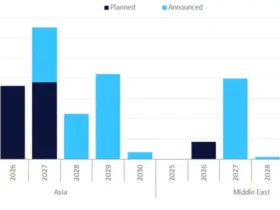
In the competitive world of chemical manufacturing, efficiency and productivity are essential. One of the most impactful ways to improve both is through process optimization — a method of making chemical processes more effective, cost-efficient, and sustainable. While theoretical approaches and simulation tools offer significant insights, nothing demonstrates the power of optimization better than real-world case studies.
In this article, we’ll explore a series of case studies that highlight how various chemical companies successfully optimized their processes, what strategies they used, and the measurable outcomes they achieved.
1. Case Study: Energy Reduction in Ammonia Production
Company: Yara International
Challenge: High energy consumption in ammonia production
Strategy: Integration of advanced process control (APC) and heat recovery systems
Results:
- 8% reduction in energy consumption
- ROI achieved in under 18 months
- Reduced CO₂ emissions by 12%
Yara International, a major player in ammonia production, faced challenges related to rising energy costs. The company implemented an advanced process control system integrated with a heat recovery unit. This allowed the plant to monitor reaction conditions in real time and adjust temperature and pressure parameters automatically. The improvements led to significant cost savings and environmental benefits.
2. Case Study: Debottlenecking a Polymerization Plant
Company: SABIC
Challenge: Limited throughput due to equipment constraints
Strategy: Process modeling and equipment upgrade recommendations
Results:
- 25% increase in production capacity
- Minimal downtime during implementation
- Enhanced safety margins
SABIC, a global chemical manufacturing company, used process simulation software to identify bottlenecks in a polymerization plant. Engineers discovered that a key heat exchanger was undersized. By upgrading the equipment and making changes to the reaction sequence, the company increased throughput without major changes to the plant layout. This cost-effective optimization significantly boosted productivity.
3. Case Study: Waste Minimization in Pharmaceutical Manufacturing
Company: Pfizer
Challenge: High solvent waste during API synthesis
Strategy: Green chemistry principles and solvent recovery
Results:
- 40% reduction in solvent waste
- Improved process yield by 15%
- Compliance with environmental regulations
In one of its active pharmaceutical ingredient (API) facilities, Pfizer identified excessive solvent waste as a major concern. The company redesigned the reaction route to include greener solvents and installed a solvent recovery system. By aligning with green chemistry principles, Pfizer achieved both sustainability and economic goals.
4. Case Study: Batch-to-Continuous Conversion
Company: BASF
Challenge: Inefficient batch operation in fine chemical production
Strategy: Transition to continuous flow processes
Results:
- 50% reduction in cycle time
- Better process control and product consistency
- Significant reduction in raw material usage
BASF, known for its innovations, converted a key product line from batch to continuous processing. Using microreactors and flow chemistry, the team achieved tighter control over reaction parameters and enhanced safety. This not only reduced costs but also improved product quality and reduced waste.
5. Case Study: Digital Twin for Process Optimization
Company: Dow Chemical
Challenge: Suboptimal control in ethylene cracker units
Strategy: Implementation of a digital twin model
Results:
- 10% increase in production efficiency
- Real-time anomaly detection
- Better decision-making based on predictive analytics
Dow Chemical developed a digital twin of one of its ethylene cracker units. This virtual replica enabled engineers to run simulations in parallel with live operations. They could predict equipment failure, optimize feedstock mix, and adjust conditions dynamically, all without interrupting operations.
Key Takeaways from These Case Studies
a. Process Modeling Is Powerful
Whether it’s for identifying bottlenecks or testing new setups virtually, simulation tools save time and money by reducing trial-and-error in real operations.
b. Energy and Waste Optimization Go Hand-in-Hand
In nearly all cases, efforts to save energy also reduced environmental impact and operating costs, making sustainability a win-win.
c. Technology Enables Smarter Decisions
Digital tools such as APC, digital twins, and AI analytics are changing how decisions are made in chemical plants. They enhance accuracy, speed, and foresight.
d. Incremental Improvements Can Have Big Impacts
Optimization doesn’t always require a complete overhaul. Sometimes, a single upgraded unit or a small process tweak can lead to substantial benefits.
e. Cross-Disciplinary Collaboration Is Crucial
Most successful optimization projects involve collaboration between chemical engineers, data scientists, plant operators, and environmental experts.
Chemical process optimization is not a one-size-fits-all approach. As demonstrated by these case studies, success can come from various strategies — from advanced controls and digital models to green chemistry and equipment upgrades.
Companies that invest in understanding their processes, harness data, and embrace innovation are better positioned to reduce costs, improve product quality, and meet sustainability goals.
As the industry faces increasing pressure from regulatory, economic, and environmental fronts, process optimization will continue to be a key differentiator. The lessons learned from these successful case studies provide a roadmap for others seeking to unlock their full operational potential.







Leave a Reply